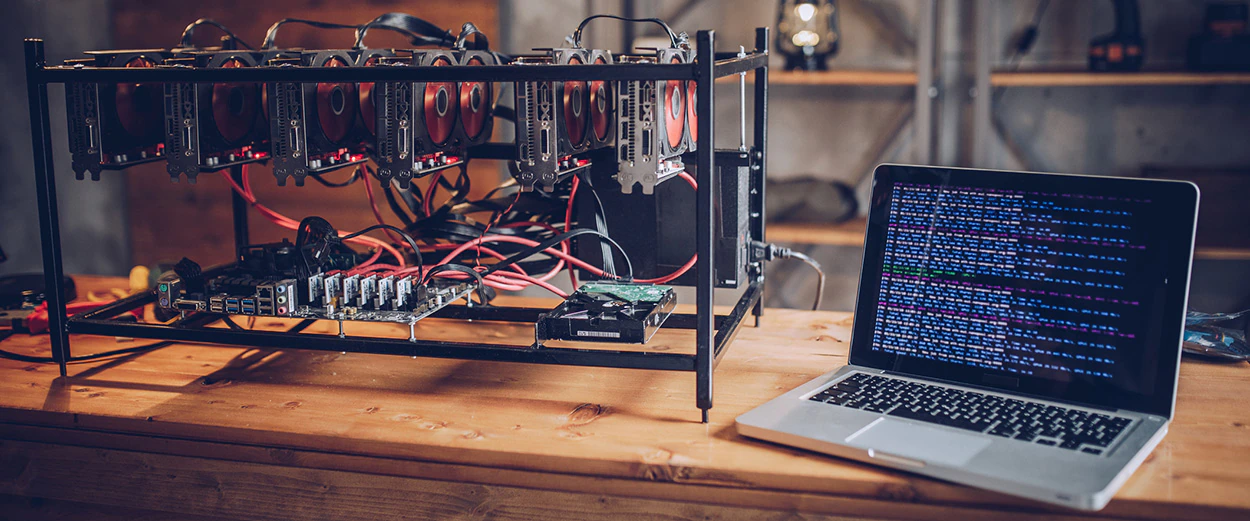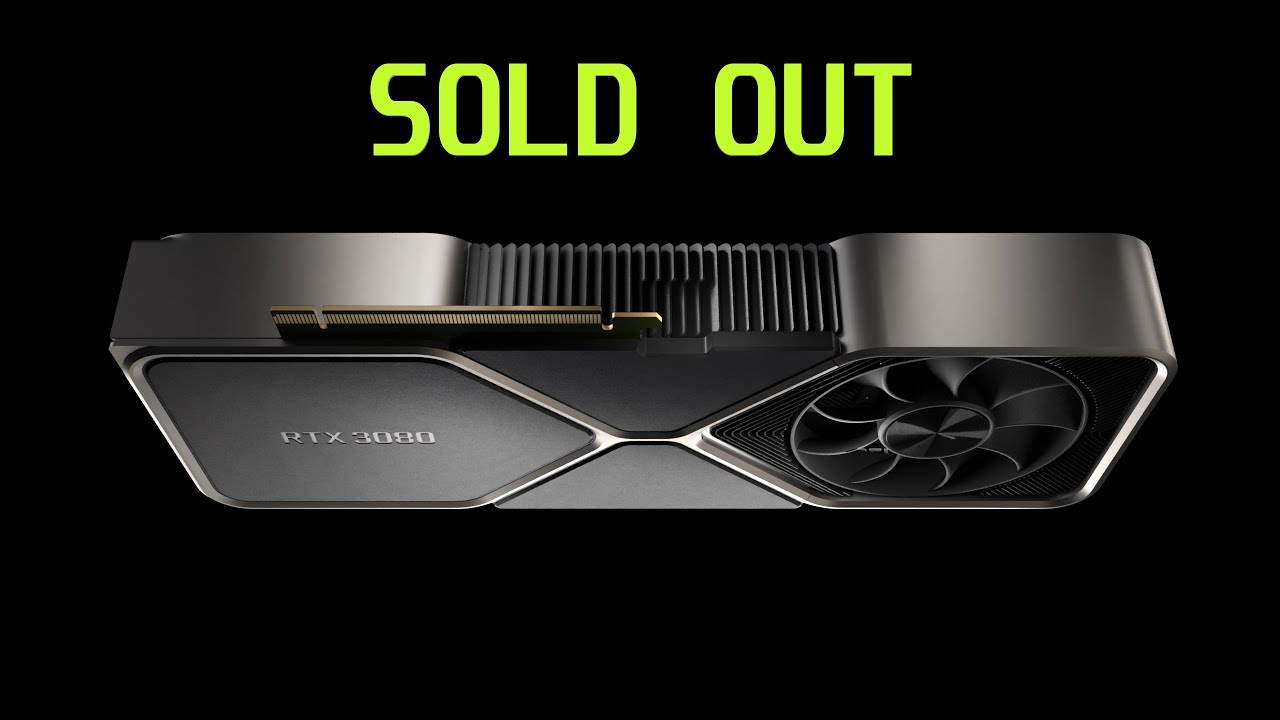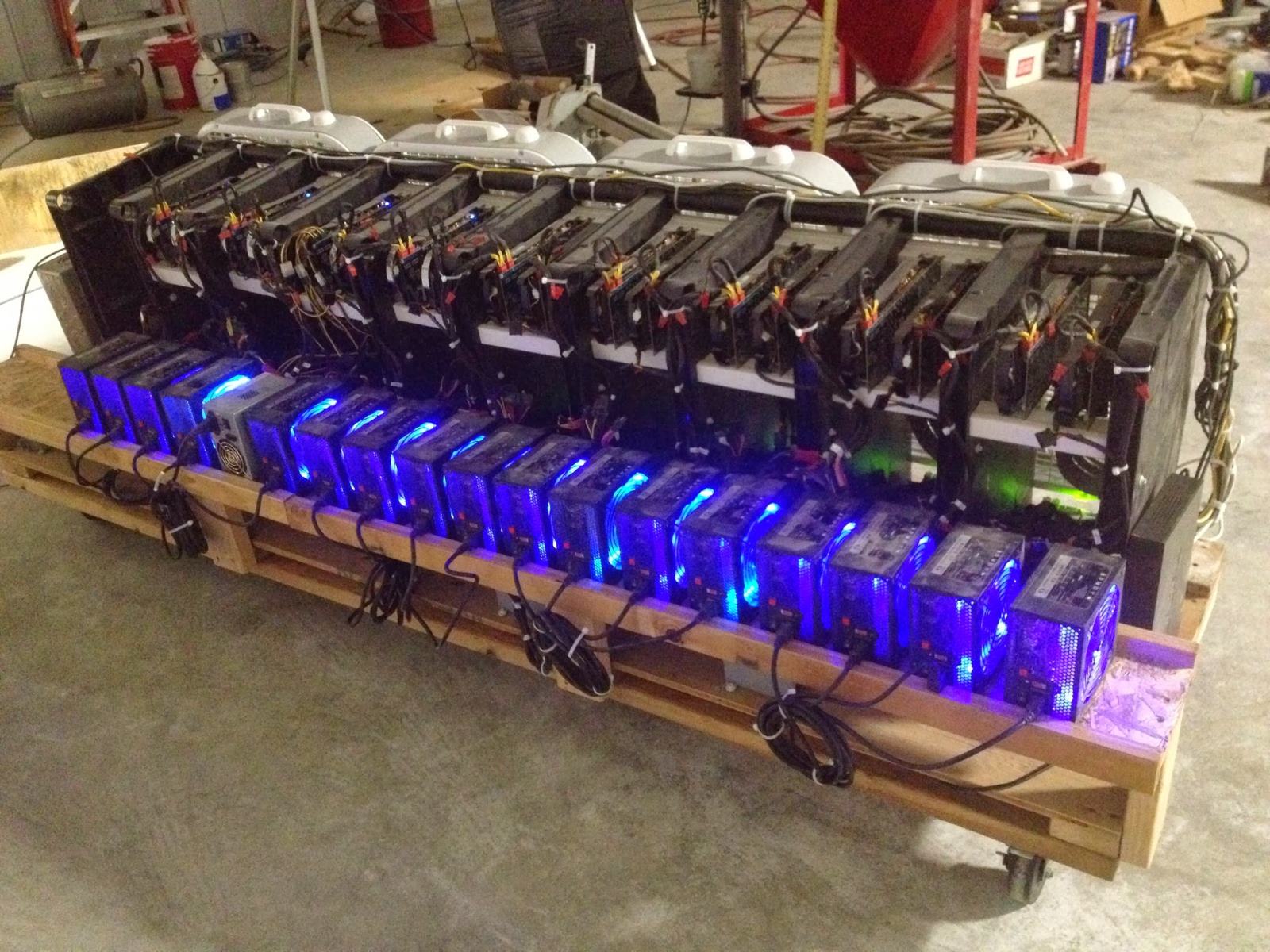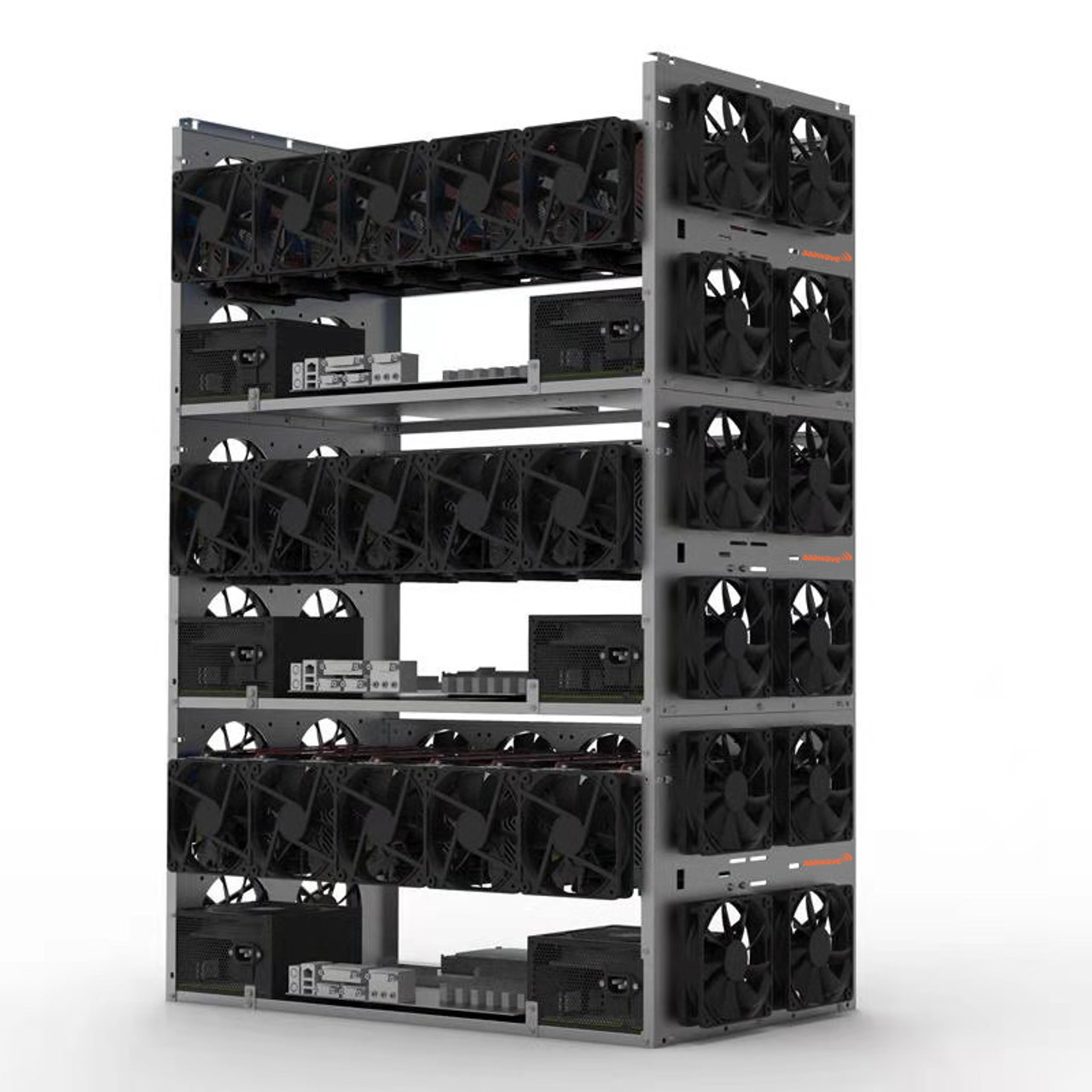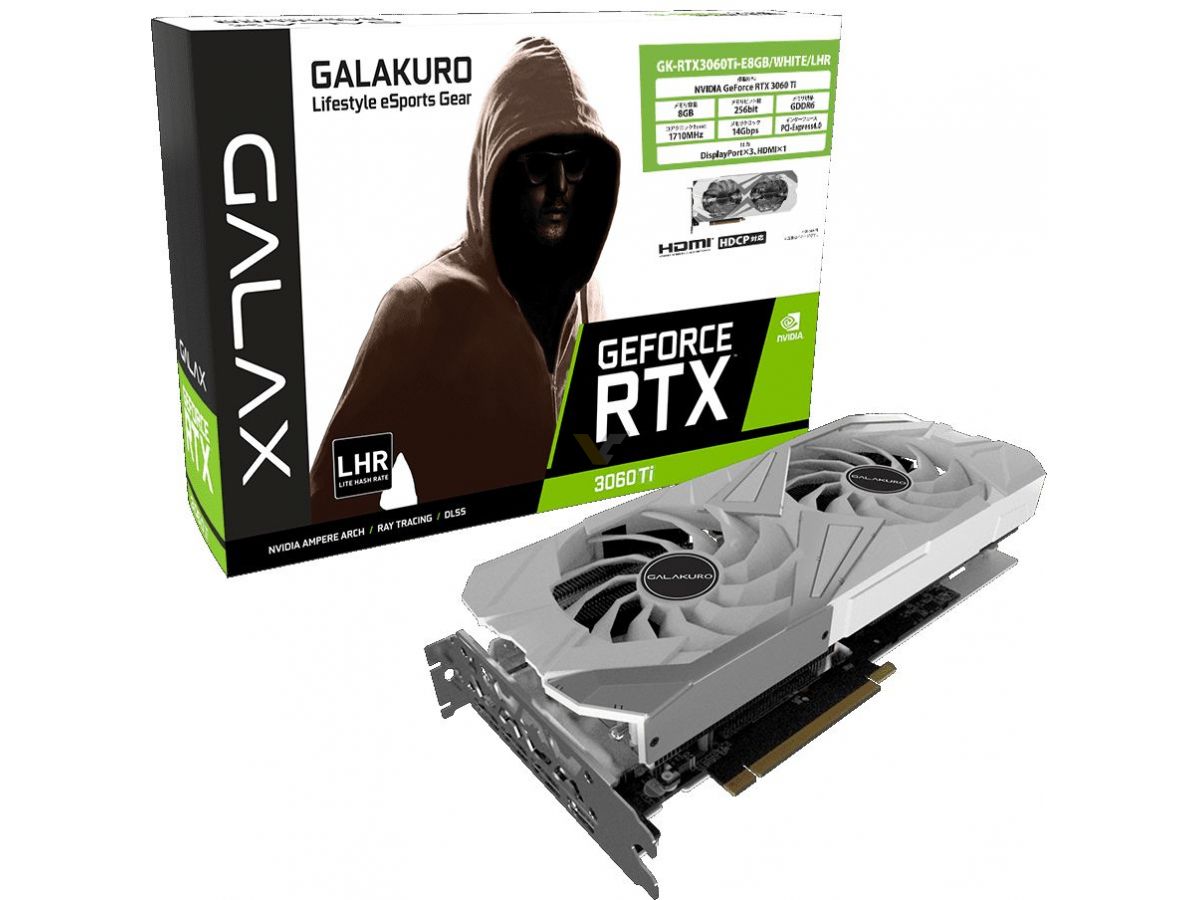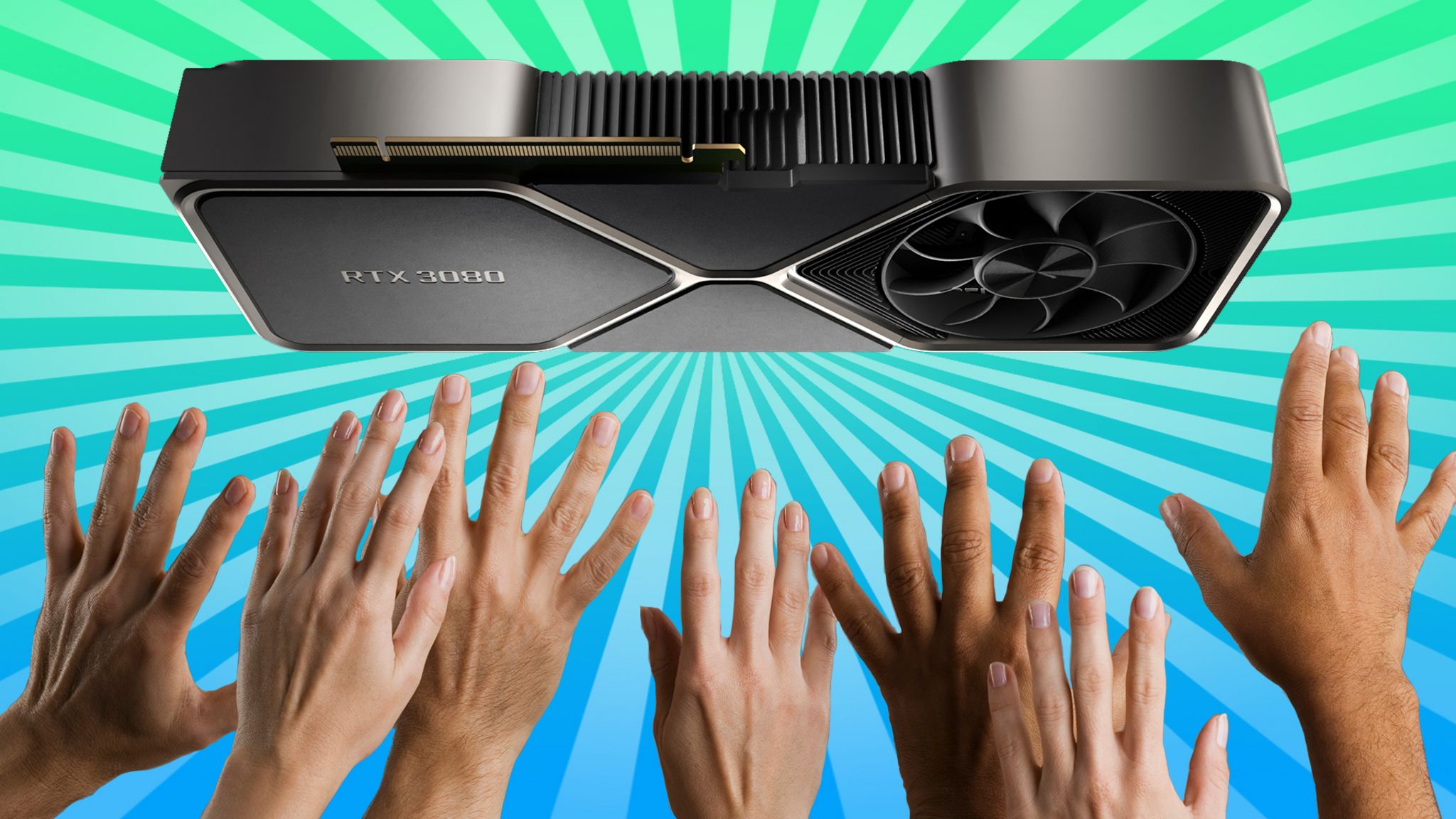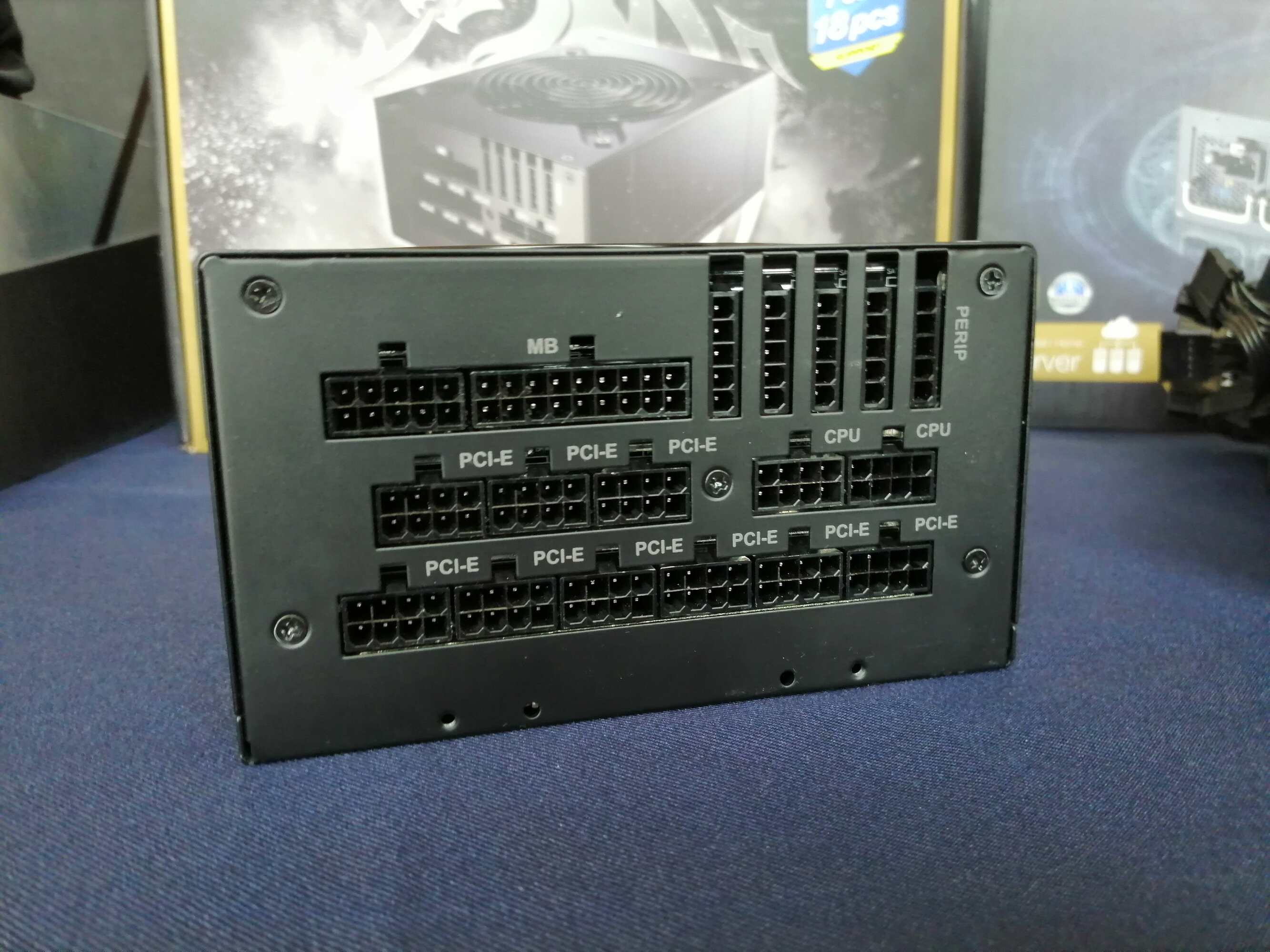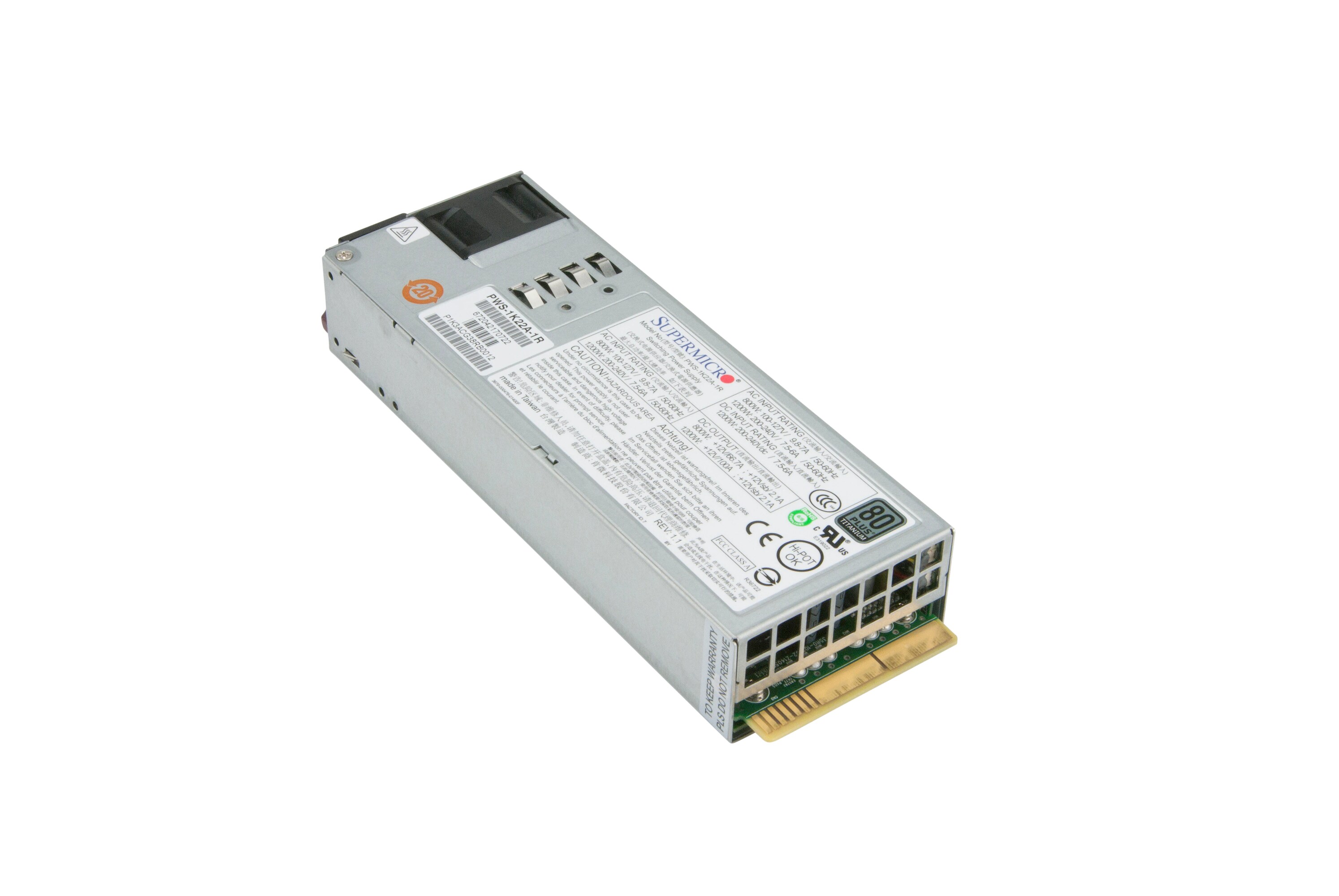Introduction
Cryptocurrency mining has become a popular and lucrative endeavor in recent years. With the rise of digital currencies like Bitcoin, Ethereum, and Litecoin, more and more people are interested in mining these virtual assets for profit. If you have a PC and a desire to enter the cryptocurrency market, you can participate in mining and potentially earn some digital coins.
But what exactly is cryptocurrency mining? In simple terms, it is the process of adding transactions to a blockchain, a decentralized and distributed ledger that records all cryptocurrency transactions. Miners use powerful computers to solve complex mathematical puzzles, which validate or confirm these transactions. In return for their efforts, miners are rewarded with new coins.
While mining can be a profitable venture, it is important to note that it requires a significant investment of time and resources. The success of your mining operation depends on several factors, including the cryptocurrency you choose to mine, the mining software you use, and the performance of your PC. Additionally, mining can be energy-intensive and may put a strain on your PC’s hardware.
Before delving into the world of cryptocurrency mining, it is essential to understand the necessary steps and considerations involved. In this guide, we will walk you through the process of mining cryptocurrency on your PC for free. We will cover everything from choosing the right cryptocurrency to mine, setting up your wallet, selecting mining software, joining a mining pool, optimizing PC performance, and calculating mining profitability.
While this guide aims to provide you with a comprehensive overview of the mining process, it is important to stay informed and adapt to the ever-changing landscape of the cryptocurrency market. Ready to get started? Let’s dive in and explore the world of cryptocurrency mining!
Choosing the Right Cryptocurrency to Mine
When it comes to cryptocurrency mining, choosing the right digital currency to mine is crucial. Not all cryptocurrencies are created equal, and factors such as profitability, mining difficulty, and market demand should be taken into consideration.
One of the most well-known and widely mined cryptocurrencies is Bitcoin. However, Bitcoin mining has become increasingly challenging and requires specialized hardware known as ASICs (Application-Specific Integrated Circuits). These devices can be costly and may not be feasible for everyone.
Fortunately, there are alternative cryptocurrencies, often referred to as altcoins, that can be mined with a standard PC. Some popular choices include Ethereum, Litecoin, Monero, and Dogecoin. Before choosing a cryptocurrency to mine, research its mining requirements, block rewards, and future growth potential.
It’s also worth considering the mining difficulty of each cryptocurrency. Mining difficulty refers to the level of complexity involved in solving the mathematical puzzles required to validate transactions. Higher mining difficulty means more computing power is needed, which can make it harder to mine a particular cryptocurrency. However, higher mining difficulty can also indicate strong market demand and potentially higher profits.
Another factor to consider is market demand and liquidity. Choosing a cryptocurrency that has a robust market and trading volume increases the likelihood of being able to easily convert your mined coins into fiat currency if desired.
Additionally, take into account the overall sustainability and long-term viability of the cryptocurrency. Is the project backed by a strong development team? Are there active communities and ongoing updates? These factors can play a significant role in the success and value of the cryptocurrency.
Ultimately, the right cryptocurrency to mine will depend on your resources, goals, and risk tolerance. It may be beneficial to diversify your mining efforts by mining multiple cryptocurrencies or joining a mining pool that allows you to mine different coins simultaneously.
By carefully evaluating these factors, you can choose the cryptocurrency that aligns with your objectives and has the potential to yield profitable mining results. Remember to stay informed about changing market conditions and adjust your mining strategy accordingly.
Setting up a Wallet
Before you start mining cryptocurrencies, it is essential to set up a wallet to securely store your digital assets. A cryptocurrency wallet is a software application or hardware device that allows you to send, receive, and store your digital coins.
There are different types of wallets available, each with its own advantages and security considerations. Here are the main categories of cryptocurrency wallets:
- Software Wallets: These wallets are installed on your computer or mobile device. They offer convenient access to your funds, but it is crucial to keep your device protected against malware and unauthorized access.
- Web Wallets: These wallets are hosted online and can be accessed through a web browser. While they provide easy accessibility, they are more vulnerable to hacking attacks. It is important to choose a reputable web wallet provider with strong security measures.
- Hardware Wallets: These are physical devices that store your cryptocurrency offline. They offer the highest level of security as they are not connected to the internet, making them immune to online threats. However, hardware wallets can be more expensive.
- Paper Wallets: A paper wallet is a physical printout of your wallet’s public and private keys. It offers a secure offline storage option but requires careful handling to prevent loss or damage.
When choosing a wallet, consider factors such as security, convenience, and the type of cryptocurrency you are mining. Some wallets support multiple cryptocurrencies, while others are specific to a particular coin.
Once you have selected a wallet, follow the instructions provided to create an account. This typically involves generating a unique address for your wallet and setting up a password or PIN to secure your funds. Make sure to choose a strong and memorable password, and consider enabling two-factor authentication for added security.
Remember to backup your wallet’s recovery phrase, private keys, or any other backup methods recommended by the wallet provider. This will ensure that you can restore access to your funds if you ever lose your device or encounter any other unforeseen circumstances.
It is important to note that your wallet address will be used to receive the mining rewards. Therefore, ensure you have set up your wallet and have the correct address ready before you start mining.
By setting up a reliable and secure wallet, you can safeguard your mined cryptocurrencies and have peace of mind knowing that your digital assets are protected.
Understanding Different Mining Methods
When it comes to mining cryptocurrencies, there are various methods you can choose from, depending on your resources and preferences. Each mining method has its own advantages and considerations. Here are the main mining methods you should be familiar with:
- CPU Mining: CPU mining involves using your computer’s central processing unit (CPU) to solve complex mathematical problems. This method is the most basic and can be done with a standard PC. However, CPU mining is not as efficient as other methods, as CPUs are not designed specifically for mining.
- GPU Mining: GPU mining utilizes the computational power of graphics processing units (GPUs) to mine cryptocurrencies. GPUs are more powerful than CPUs and can perform parallel computations, making them more efficient at mining. This method is commonly used for mining altcoins like Ethereum.
- ASIC Mining: ASIC mining involves using specialized hardware known as Application-Specific Integrated Circuits (ASICs) to mine cryptocurrencies. ASICs are designed specifically for mining and offer significantly higher computational power and efficiency compared to CPUs and GPUs. ASIC mining is commonly used for mining Bitcoin and other cryptocurrencies with high mining difficulty.
- Cloud Mining: Cloud mining allows you to remotely rent mining equipment and computing power from a mining service provider. This eliminates the need to set up and maintain your own mining hardware. However, it is important to research and choose a reputable cloud mining provider, as there have been cases of scams in the industry.
Each mining method has its own costs and benefits. CPU and GPU mining can be done with standard consumer-grade hardware, but they may not be as efficient or profitable as ASIC mining. ASIC mining, on the other hand, requires a significant upfront investment in specialized hardware, but it offers higher mining power and potential profitability.
Cloud mining can be a convenient option for those who lack the technical expertise or prefer not to deal with the hassle of setting up and maintaining their own mining equipment. However, it is essential to carefully consider the costs and potential returns associated with cloud mining contracts.
It’s important to note that the mining landscape is constantly evolving, and the mining method that is most profitable today may not be the most profitable in the future. Factors such as cryptocurrency price fluctuations and mining difficulty adjustments can impact profitability. Stay informed about market trends and regularly reassess your mining strategy to optimize your earnings.
By understanding the different mining methods and their pros and cons, you can choose the most suitable approach for your mining venture and maximize your chances of success.
Selecting the Best Mining Software
Once you have chosen the cryptocurrency to mine and decided on the mining method, the next step is to select the appropriate mining software. Mining software is a crucial component that allows you to connect your mining hardware to the cryptocurrency network and participate in the mining process.
When choosing mining software, there are several factors to consider:
- Compatibility: Ensure that the mining software is compatible with your operating system and mining hardware. Some mining software may be specific to certain operating systems, while others offer cross-platform compatibility.
- Features: Different mining software offers varying features and customization options. Look for software that provides real-time monitoring of your mining operations, temperature and fan control, and the ability to switch between different mining algorithms or cryptocurrencies.
- User Interface: A user-friendly interface can make the mining process more convenient and accessible. Look for software that has a clean and intuitive interface, making it easier to configure and monitor your mining activities.
- Community Support: Consider software that has an active community of users and developers who can provide assistance and troubleshooting when needed. Active development and regular updates are also indicative of reliable software.
- Ease of Use: If you are new to mining, consider software that offers a beginner-friendly interface and guides. Look for software that simplifies the process of setting up mining configurations and provides detailed statistics and performance reports.
Popular mining software options include CGMiner, BFGMiner, EasyMiner, and Claymore’s Miner. However, the choice of software may vary depending on the specific cryptocurrency you are mining and the hardware you are using.
Before settling on a specific software, it is recommended to research and compare different options. Read user reviews, check forums and mining communities, and consider the reputation and history of the software developer.
Keep in mind that the performance of your mining software can directly impact your mining efficiency and profitability. Thus, it is advisable to stay up-to-date with the latest updates and patches for your chosen software to ensure optimal performance and security.
By carefully evaluating the compatibility, features, user interface, community support, and ease of use, you can select the best mining software that suits your mining setup and goals.
Joining a Mining Pool
When mining cryptocurrency, you have the option to mine solo or join a mining pool. Solo mining involves mining cryptocurrency independently, while joining a mining pool allows you to combine your resources with other miners to increase your chances of earning rewards.
Here are some key considerations when joining a mining pool:
- Increased Probability of Earning Rewards: By pooling your resources with other miners, you have a higher probability of successfully mining blocks and receiving rewards. This can be especially beneficial for those with limited mining resources.
- Steady and Predictable Income: Mining in a pool offers a more consistent income stream compared to solo mining. While the individual rewards may be smaller, they are distributed more regularly, providing a steady income over time.
- Minimization of Mining Variance: Mining difficulty can vary, resulting in fluctuations in the time it takes to find blocks. By joining a mining pool, you reduce the impact of these variances and ensure a more stable mining experience.
- Pooling Fees: Most mining pools charge a small fee for their services. This fee is typically a percentage of the mining rewards earned. Consider the fee structure of different pools and ensure that the fees are reasonable and competitive.
- Pool Reputation and Stability: It is crucial to choose a reputable and well-established mining pool. Look for pools with a reliable track record, strong community support, and a high hashrate. Additionally, check if the pool has proper security measures in place to safeguard your mining earnings.
- Pool Size: The size of the mining pool can impact your potential rewards and the level of competition among miners. Larger pools typically offer more consistent payouts due to their higher computational power, but the rewards may be distributed among more participants.
When selecting a mining pool, consider factors such as the reliability of the pool’s servers, the availability and responsiveness of customer support, and the pool’s payout system. Some popular mining pools include Slush Pool, F2Pool, and Antpool, but the choice may vary depending on the specific cryptocurrency you are mining.
Before joining a mining pool, familiarize yourself with the pool’s rules and payout structure. Some pools may offer different reward systems such as pay-per-share (PPS) or proportional payouts. Determine which system aligns with your goals and expected mining output.
Joining a mining pool can be a beneficial strategy to increase your chances of earning consistent rewards. By carefully evaluating factors such as rewards, pool reputation, fees, and stability, you can choose a mining pool that suits your mining capabilities and preferences.
Optimizing PC Performance for Mining
When mining cryptocurrency on your PC, optimizing its performance is essential to maximize your mining efficiency. Here are some tips to optimize your PC for mining:
- Hardware Considerations: Ensure that your PC meets the minimum hardware requirements for mining. The main components to consider are the CPU, GPU, and RAM. A more powerful CPU and GPU will typically yield higher mining performance.
- Operating System Optimization: Optimize your operating system for mining by disabling unnecessary background processes, disabling power-saving features, and setting performance options to maximize mining performance.
- Graphics Card Optimization: If you are mining using GPU(s), consider overclocking your graphics card(s) to achieve higher hash rates. However, be cautious when overclocking, as it can generate more heat and potentially damage your GPU if done incorrectly.
- Cooling and Ventilation: Mining can put a strain on your PC’s hardware and generate a significant amount of heat. Ensure proper cooling and ventilation by using additional fans or even dedicated cooling solutions to maintain optimal temperatures and prevent overheating.
- Mining Software Optimization: Configure your mining software to utilize the full capabilities of your hardware. Adjust mining parameters such as intensity, mining kernel, and memory clocks to optimize performance and stability.
- Network Stability: A stable and reliable internet connection is crucial for uninterrupted mining. Ensure that your PC is connected to a stable network with sufficient bandwidth to handle the mining process.
- Monitor System Performance: Regularly monitor your PC’s performance while mining to identify any potential issues or bottlenecks. Use monitoring software to track temperatures, hash rates, and power consumption to ensure your system is operating optimally.
- Regular Maintenance: Conduct regular maintenance tasks such as cleaning dust from the hardware components, updating drivers, and keeping your operating system up to date. Regular maintenance helps prevent hardware issues and ensures smooth mining operations.
Additionally, it’s important to note that some mining software allows you to adjust the mining intensity or workload. Experiment with different intensity levels to find the sweet spot that optimizes mining performance while keeping your PC stable.
Finally, always prioritize safety and take necessary precautions to protect your PC and data. Invest in robust antivirus and firewall software, avoid downloading suspicious files or visiting potentially harmful websites, and be cautious when installing mining software from sources that you are not familiar with.
By following these optimization techniques and maintaining your PC’s performance, you can enhance your mining capabilities and potentially increase your mining efficiency and rewards.
Calculating Mining Profitability
Before diving into cryptocurrency mining, it is crucial to assess the potential profitability of your mining operation. Calculating mining profitability allows you to estimate the costs involved and the potential earnings you can expect. Here’s how to calculate mining profitability:
- Power Consumption: Determine the power consumption of your mining hardware in kilowatt-hours (kWh). This information can usually be found in the device specifications or on the manufacturer’s website. Multiply the power consumption by the cost per kWh to calculate the daily electricity cost.
- Hash Rate: Determine the hash rate of your mining hardware. The hash rate refers to the number of calculations the hardware can perform per second. It is typically measured in hashes per second (H/s) or kilohashes per second (KH/s).
- Mining Difficulty: Find the current mining difficulty of the cryptocurrency you are mining. Mining difficulty is a measure of how difficult it is to find a hash that meets the network’s criteria. It adjusts periodically based on the total mining power in the network.
- Block Reward: Identify the current block reward for the cryptocurrency. The block reward is the number of coins a miner receives for successfully mining a block and adding it to the blockchain.
- Pool Fees: If you are mining in a pool, consider the pool fees. Most mining pools charge a small percentage of the mining rewards as fees. Subtract the pool fees from your potential earnings.
Once you have gathered the necessary information, you can use an online mining profitability calculator or a spreadsheet to estimate your potential earnings. These calculators take into account factors such as mining difficulty, block rewards, power consumption, and pool fees to provide an estimate of your daily, weekly, and monthly profits.
It is important to note that mining profitability is influenced by various factors, including cryptocurrency price volatility, network difficulty changes, and changes in mining rewards. These factors can affect the amount of cryptocurrency you can earn with your mining hardware.
It is advisable to regularly recalculate your mining profitability and adjust your mining strategies based on market conditions. Be aware that mining profitability can fluctuate, and what may be profitable today may not be as profitable in the future.
Lastly, consider the initial cost of acquiring your mining hardware and the potential return on investment (ROI) timeframe. Calculate how long it will take to recoup your initial investment based on your estimated mining earnings. This will help you make informed decisions about your mining operation.
By accurately calculating mining profitability and staying aware of market dynamics, you can make informed decisions and optimize the financial returns of your mining venture.
Managing Mining Risks
While cryptocurrency mining can be a potentially lucrative venture, it is not without its risks. It is important to be aware of these risks and take necessary precautions to mitigate them. Here are some key risks to consider when mining cryptocurrency:
- Market Volatility: Cryptocurrency prices are known for their volatility, which can impact your mining profitability. Fluctuations in market prices can affect the value of the coins you mine, potentially reducing your earnings. Stay informed about market trends and consider factors such as market demand and price stability when choosing which cryptocurrency to mine.
- Hardware Failure: Mining places a considerable load on your hardware, including your CPU or GPU. The constant stress on these components can lead to wear and tear, potentially resulting in hardware failure. To mitigate this risk, ensure proper cooling and ventilation, monitor the temperature, and consider investing in quality hardware with warranties.
- Energy Costs: Cryptocurrency mining can consume a significant amount of electricity, leading to high energy costs. Fluctuating energy prices can impact the profitability of your mining operation. Consider energy-efficient mining hardware and monitor your electricity consumption to minimize costs.
- Regulatory and Legal Risks: The legality and regulatory landscape surrounding cryptocurrencies can vary from one jurisdiction to another. Stay informed about the legal status of mining in your country and comply with any applicable regulations. Failure to do so may result in legal consequences or financial penalties.
- Cloud Mining Scams: Be cautious when considering cloud mining services, as there have been instances of fraudulent schemes and scams in the industry. Research and carefully choose reputable cloud mining providers with transparent operations and a solid track record to minimize the risk of falling victim to scams.
- Security Breaches: Mining operations involve storing and transferring digital assets, which can be vulnerable to security breaches. Protect your mining assets by using secure wallets, enabling two-factor authentication, regularly updating your mining software, and following best practices for internet security.
- Network Attacks: Cryptocurrency networks can be targeted by various hacking and cyber-attacks. Stay vigilant and ensure that your mining software and devices are protected against potential threats. Regularly update your software and take necessary measures to secure your mining operation.
To manage these risks effectively, it is essential to adopt good risk management practices. Stay informed about the latest developments in the cryptocurrency industry, diversify your mining efforts across multiple cryptocurrencies, and regularly reassess the profitability and risks of your mining operations.
Furthermore, stay connected with the mining community by joining forums or online communities. Engaging with experienced miners can provide valuable insights into risk mitigation strategies and help you stay updated on the latest security practices.
By being proactive and implementing appropriate risk management measures, you can minimize the potential risks associated with cryptocurrency mining and create a more secure and profitable mining operation.
Frequently Asked Questions (FAQs)
1. Is cryptocurrency mining profitable?
The profitability of cryptocurrency mining depends on various factors such as the cryptocurrency being mined, the mining hardware used, electricity costs, and market conditions. It is important to carefully calculate mining profitability and stay informed about market trends before starting a mining operation.
2. Can I mine cryptocurrency on my regular PC?
Yes, you can mine certain cryptocurrencies on a regular PC. However, the profitability and efficiency of mining will be lower compared to specialized mining hardware like ASICs or high-end graphics cards (GPUs).
3. What is a mining pool?
A mining pool is a group of miners who collaborate their computing power to increase the chances of mining blocks and receiving rewards. By joining a mining pool, miners can enjoy more regular and predictable earnings compared to solo mining.
4. How do I choose the right mining software?
When selecting mining software, consider factors such as compatibility, features, user interface, community support, and ease of use. Research different options, read user reviews, and choose software that aligns with your mining setup and goals.
5. What are the risks of cryptocurrency mining?
Common risks include market volatility, hardware failure, energy costs, regulatory and legal risks, cloud mining scams, security breaches, and network attacks. It is important to be aware of these risks and take necessary precautions to mitigate them.
6. How can I optimize my PC for mining?
To optimize your PC for mining, consider hardware considerations, operating system optimization, graphics card optimization, cooling and ventilation, mining software optimization, network stability, monitoring system performance, and regular maintenance.
7. Should I consider cloud mining?
Cloud mining can be a convenient option for those who lack the technical expertise or prefer not to deal with the hassle of setting up and maintaining their own mining equipment. However, it is important to research and choose reputable cloud mining providers to avoid falling victim to scams.
8. How do I calculate mining profitability?
Calculate mining profitability by considering power consumption, hash rate, mining difficulty, block rewards, and pool fees. Use online mining profitability calculators or spreadsheets to estimate potential earnings. It is important to regularly reassess mining profitability based on market conditions.
9. Do I need a cryptocurrency wallet for mining?
Yes, you will need a cryptocurrency wallet to securely store the digital assets you mine. Choose a wallet based on factors like security, compatibility with your cryptocurrency, and ease of use. Set up a wallet and obtain your wallet address before starting your mining operation.
10. Is mining legal?
The legality of mining varies from one jurisdiction to another. It is important to stay informed about the legal status of mining in your country and comply with any applicable regulations to avoid legal consequences.
Remember, it’s important to regularly update your knowledge and adapt your mining strategies to stay profitable in the ever-changing cryptocurrency landscape.









